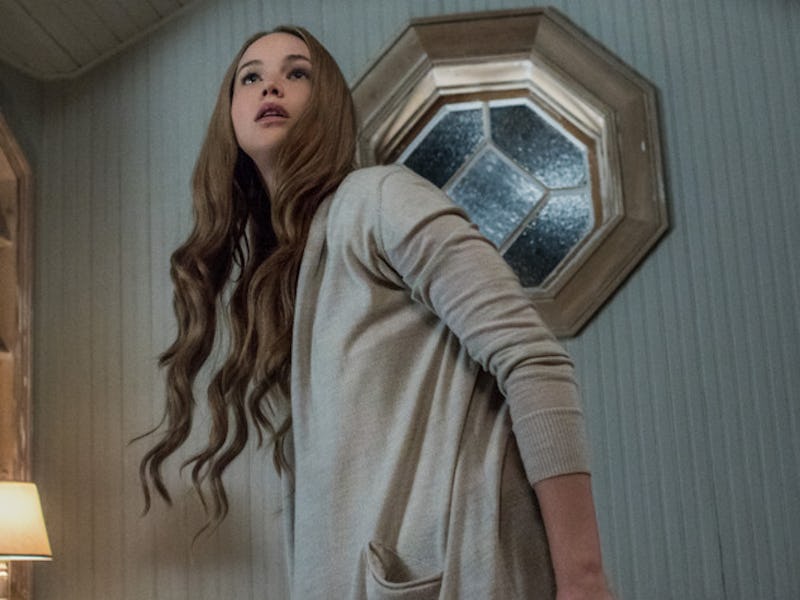Darren Aronofsky’s Mother!, both a biblical allegory and psychological thriller, has divided audiences as much as it has disturbed them. One of the reasons the film is such a mindscrew is because Aronofsky specifically uses only three camera angles, each of which is psychologically unsettling in its own way.
In an interview with The New York Times published on Tuesday, Aronofsky explains that he shot the entirety of Mother! with a hand-held 16-millimeter camera and only used three angles: close-up, over-the-shoulder, and the point-of-view of Mother, the character played by Jennifer Lawrence. The “entire language” of the film was those three shots, he says, “because I wanted to give audiences a very subjective experience of what it is to be Jennifer Lawrence’s character.”
In his guide to the psychology of photography Photographs: Remembered and Forgotten, Rider University psychology professor John Suler, Ph.D., explains how those angles create such an intimate, unsettling feel.
The Close-Up
A close-up of Jennifer Lawrence in "Mother!"
Suler’s work is built on the understanding that camera angles can be used to influence the psychological state of the viewer as well as shift a scene’s emotional impact. These forced perspectives instruct viewers in how to evaluate and empathize with characters and have been shown to influence how well they remember the scene later. In his notes on the close-up shot, Suler echoes Aronofsky’s thoughts on creating subjectivity: It’s the closest the camera comes to the subject, inherently making it the most personal look. In his paper, Suler writes:
In cinematography of human subjects, it’s called the ‘reaction shot’ because the close-up helps the viewer intimately experience the emotions and state of mind of the person in reaction to the situation at hand. The close-up works well in revealing the personality of subjects, or the essence of some aspect of who they are as a person.
Over-the-Shoulder
Jennifer's "Mother" explores her home.
Over-the-shoulder, also known as the rear angle, is designed to cause the viewer to feel, as Suler puts it, “physically and emotionally distant from the subject.” The viewer can’t see the character’s face — and in turn, can’t know exactly how they are supposed to feel.
Still, they’re emotionally bound to the character because they still have to experience the same scene. Empathy builds as the viewer’s temporal experience matches that of the character on screen: if the character turns a corner into a new room, for example, it becomes the first time the viewer sees the new room as well. This helps viewers identify with the experience. In the case of Mother!, it means that if Mother is about to be disturbed by something new, the viewer will likely be disturbed as well.
Point-of-View
Javier Bardem as "Him."
The point-of-view angle allows viewers to see things from a character’s eyes, and in Mother!, this means we take in all the chaos that has descended upon Mother’s home in the same way she would. Suler notes that the experience is at once a subjective and objective experience: Viewers are made to feel like the “unnoticed player” following the character’s steps, yet, because they can’t see the protagonist, they get the length of the full shot to judge what’s actually occurring.
This perspective also puts on the viewer the burden of deciding whether or not what they are seeing is what’s really happening in the film, or whether they’re seeing things through the eyes of an unreliable narrator. It’s a pretty unsettling move, on Aranofsky’s part, because everything that Mother sees is pretty damn surreal.
